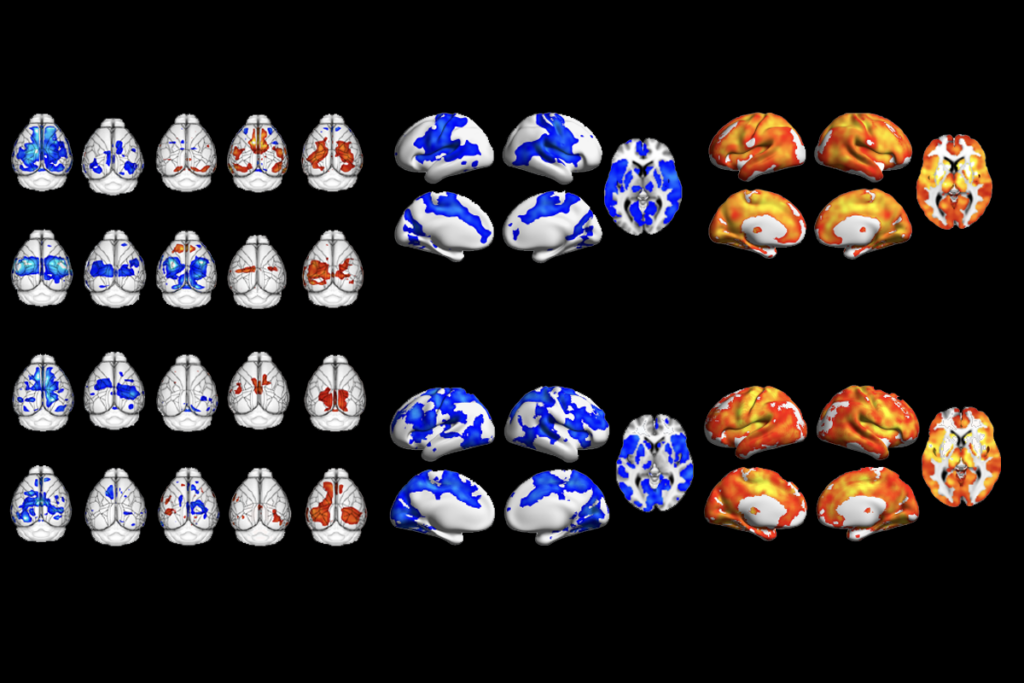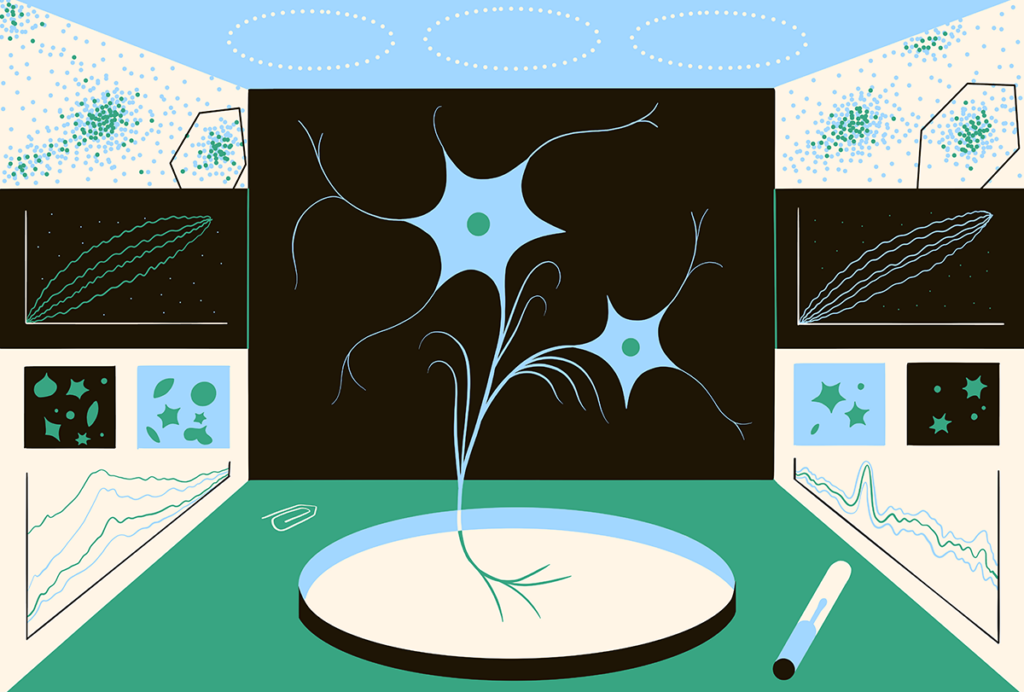More than 20,000 neuroscientists from around the world are heading to sunny San Diego, California, for Neuroscience 2022, the 51st annual meeting of the Society for Neuroscience (SfN), its organizers say.
The five-day conference, which kicks off on Saturday, 11 November, is SfN’s first in-person meeting since 2019 and its first hybrid meeting ever. The agenda features more than 12,000 presentations and 400 exhibits, according to Matt Windsor, SfN’s media and communications manager.
The expected turnout is lower than that at the October 2019 conference, when closer to 30,000 scientists descended upon Chicago, Illinois. Among 35 researchers who responded to a Spectrum survey about this year’s gathering, 19 said they plan to attend either in person or virtually and look forward to sessions or presentations on stem cell biology and sensory features in autism.
Laura Colgin, associate professor of neuroscience at the University of Texas at Austin, said she is most excited about a lecture slated for Wednesday, 16 November, by Edward Chang, professor of neurological surgery at University of California, San Francisco Weill Institute for Neurosciences, called “Searching for words: The new neuroscience of speech.” Hsiao-Tuan Chao, assistant professor of pediatrics at Baylor College of Medicine in Houston, Texas, singled out a session scheduled for Sunday, 13 November, called “The cerebellum beyond motor control: Insights into health and disease.”
Among the 16 survey respondents who said they are not planning to attend, many cited issues with travel. “I am reducing my travel due to the energy crisis caused by the Russian war,” wrote Peter Scheiffele, professor of neurobiology at the University of Basel in Switzerland.
Others listed a range of concerns: “Too many other obligations, anxious about COVID and find myself getting pulled too many directions at SfN meeting,” wrote Ben Philpot, professor of neuroscience at the University of North Carolina at Chapel Hill.
Spectrum reporters plan to attend a variety of autism-related sessions, posters and presentations, including the following:
100.10 – Structural MRI assessment of the neuroanatomy in 9 novel mouse models related to autism
176.09 – Effects of heterozygous deletion of autism-related gene Cullin-3 in mice
179.08 – Large scale ECoG recording during social scene watching and social behaviors in marmosets
241.25 / WW38 – Verbal fluency in ASD: the impact of aging across the adult lifespan
250.06 – Sensory phenotyping of ASD genetic models in zebrafish larvae
437.10 / B36 – Odor perception in a mouse model of autism spectrum disorder
496.06 / YY21 – Compartmental neuropeptide release measured using a new oxytocin sensor
604.08 / B56 – Mapping the neuroconnectional landscape in autism via cross-species fMRI
669.02 – Searching for words: The new neuroscience of speech
Check back throughout the week for Spectrum’s coverage, and keep up with all of our reporting by subscribing to our newsletter(s) and following us on Facebook, Instagram, Twitter and LinkedIn.
Speaking of Twitter, whether you’re attending the meeting in person or virtually, be sure to join our live Twitter chat on Monday, 14 November, at 12:00 p.m. PST. Discuss science from the conference and weigh in on questions posted by @Spectrum using the hashtag #SFNChat.
Let us know what sessions or presentations you’re most excited about in the comments section below or by emailing [email protected].
Read more reports from Neuroscience 2022.





